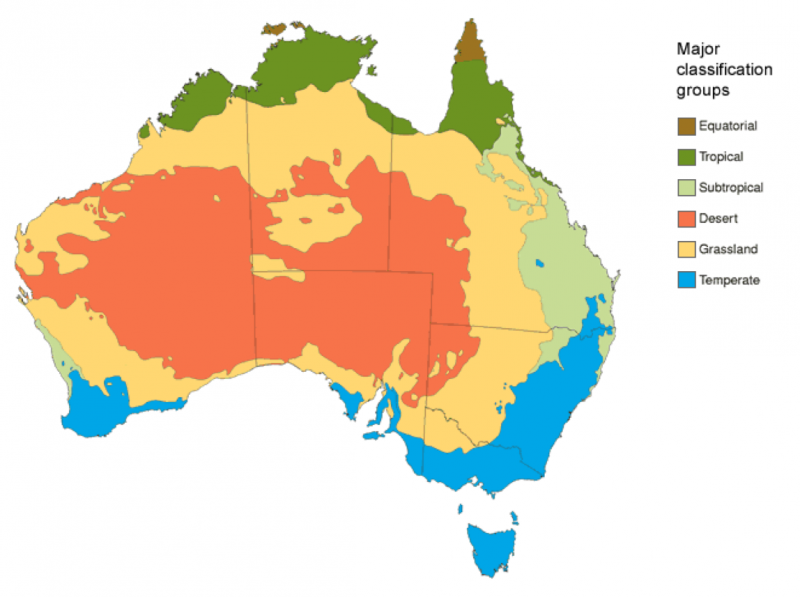Australia has a dry climate and rain falls mostly on the coastal regions, which is the reason why so many major urban areas are located in coastal regions (Blakemore, 2019). The annual evaporation rate exceeds the annual rainfall amount throughout the country, only forty percent of the land gets less than ten inches of rain per year (Country Reports, 2022). This makes it easy to see just how much the lifestyles of Australians are impacted by their climate. Their climate has the power to directly impact which areas of the country a majority of the population lives in.
Australia’s seasons are opposite of the ones that the northern hemisphere experiences. Summer happens from December to February, Fall is March to May, Winter occurs from June to August, and Spring is from September to November (Tourism Australia, 2022). Because of Australia’s large size there are six different climate groups, they are known as Equatorial, Tropical, Subtropical, Desert, Grassland, and Temperate, the way these regions are divided can be seen in figure 1 (Australian Wildlife Journey, 2020). The Temperate zone are the coastal regions in New South Land, Victoria, Tasmania, and a major part of South Australia. The Temperate climate means that these regions experience mild to warm summers and their winters are cool and not extremely cold (Amend, 2022). The next climate area which surrounds the desert area is called the Grasslands, the climate varies from warm tropical in the summer to rainy winters (Commonwealth of Australia, 2017). The desert climate makes up a majority of Australia’s land and is located mainly in the center of the country. This land is also known as the Outback, and due to the extremely dry and hot climate it is mainly uninhabitable (Norton, 2014). The climate in the outback can be very hot during the summer both during the day and at night, but in the winter months the nights can get very cold but still remain warm during the day (Study Australia, 2022). The fourth climate zone is the Tropical zone, this refers to the area at the top end of the Northern Territory. Australia not only has a Tropical zone but also a sub-tropical zone that is made up of parts of the coastal and inland areas in the Queensland region. The Tropical and Subtropical zones are different from the other climate zones in Australia because they experience distinct wet and dry seasons. The dry season occurs from April to October and the wet season occurs from November to March. The wet season is hotter than the dry season and experiences the most amount of rain, most especially in the Tropical zone (Australian Wildlife Journey, 2022). The final zone is the Equatorial zone which is the smallest zone in the northernmost region, and is the area of Australia closest to the equator.
Figure 1




